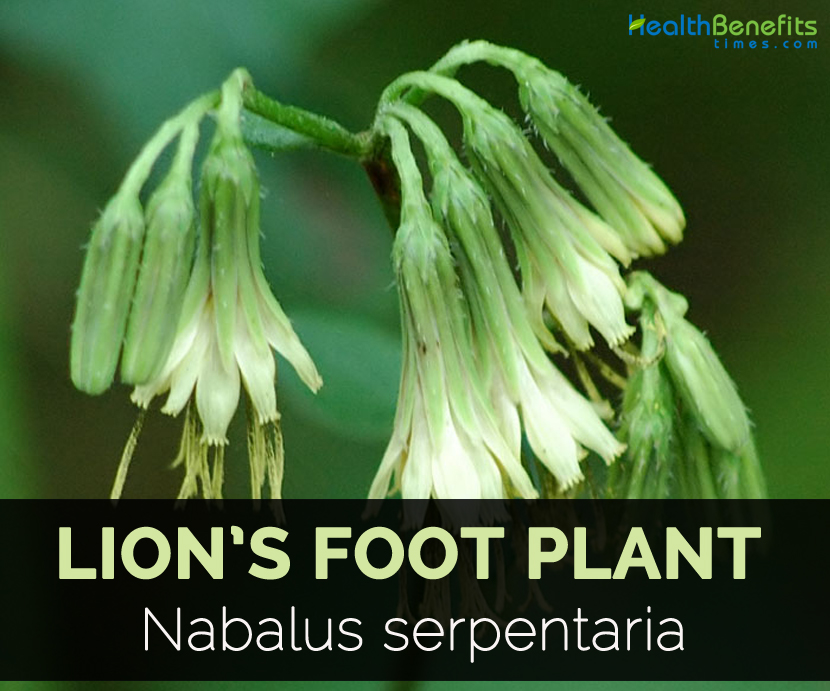| Lion's Foot Plant Quick Facts | |
|---|---|
| Name: | Lion's Foot Plant |
| Scientific Name: | Nabalus serpentaria |
Leaves are alternate and variable in shape i.e. deeply and irregularly lobed. Flowering stems are 1 to 2 meters tall and leaves are pinnately lobed. Paniculate inflorescence comprises of drooping capitula composed of ligulate flowers. Capitulae have 8 to 14 flowers with yellow to cream colored corollas. Flowers are 8 to 14 mm long having lower hald fused into a tube. Each flower produces single achene topped by pappus which supports in wind dispersal. An involucre comprises of two whorls of green bracts. Inner whorl has eight lance shaped bracts about 8 to 14.5 mm long. An outer whorl has five to nine much shorter bracts. Its habitat is sandplain grasslands and also occurs in rocky slopes along road sides and in other disturbed habitats. Usually coarse stems have purple coloration exuding a milky sap when damaged.
Uses
The milky juice of the plant is taken internally, and the root, cut in small pieces or grated, is useful and acts most favourably in cases of dysentery or diarrhoea.
Facts About Lion’s Foot Plant
| Name | Lion’s Foot Plant |
|---|---|
| Scientific Name | Nabalus serpentaria |
| Common/English Name | Prenanthes Serpens, Rattlesnake-Root, White Lettuce, Cancer Weed, Canker root, Rattlesnake root, White cankerweed |
| Plant Growth Habit | Perennial plant |
| Root | Branching, tuberous |
| Stem | 1 to 2 meters tall, green or often purplish |
| Leaf | Smooth, thick, deep green |
| Medicinal parts | The whole plant |
| Flower | White or yellowish, 11-14 mm long |
Dose
1 teaspoonful of the granulated root steeped in 1 cup boiling water. Drink cold 1 cupful during the day, a large mouthful at a time. Of the tincture, 10–20 min.
Externally
In case of snake bites, steep the leaves in boiling water and apply as a poultice.
Homoeopathic Clinical
Tincture of whole fresh plant—Constipation, Ophthalmia.
Medicinal uses
- Root decoction is used for treating canker sores, dysentery and diarrhea.
- Drink milky juice to cure snake bite.
- Poultice made from leaves are used as first aid for snake, insect and dog bites.
- Native Americans put powdered root in food for stimulating milk flow after childbirth.
- Apply the leaves steeped in water to wound and change it frequently.
- Root decoction is used for treating rattlesnake bite and dysentery.
References:
http://www.nativeplanttrust.org/documents/87/Nabalusserpentarius.pdf
https://www.mass.gov/files/documents/2016/08/wi/nabalus-serpentarius.pdf
https://www.henriettes-herb.com/eclectic/kings/nabalus.html
https://plants.usda.gov/core/profile?symbol=PRSE
https://www.wildflower.org/plants/result.php?id_plant=pral2
http://www.naturalmedicinalherbs.net/herbs/n/nabalus-serpentarius=lion’s-foot.php
http://ilovehomoeopathy.com/nabalus/
http://medicinalherbinfo.org/000Herbs2016/1herbs/lions-foot/
Comments
comments
